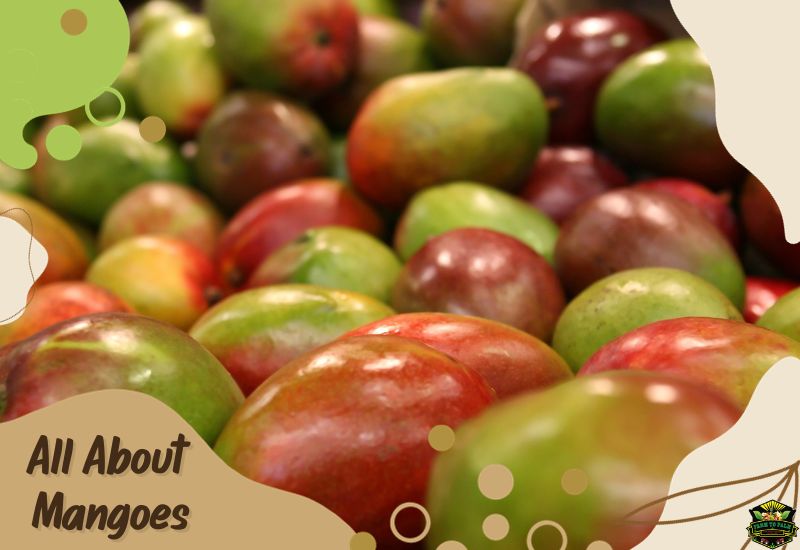Many people mistakenly believe all mangoes are the same, but that is untrue. It’s similar to comparing a Navel orange to a Blood orange or a Granny Smith apple to a Pink Lady apple. Each type of mango has distinct differences, such as the Champagne mango, Kent mango, or Haden mango.
Mango trees require warm, tropical temperatures to thrive, and anything below 30°F can be fatal. As a result, large-scale mango production is limited to specific regions in the United States, including California, Florida, Hawaii, and Puerto Rico.
Mangoes purchased in the U.S. are primarily imported from Mexico, Ecuador, Peru, Brazil, Guatemala, and Haiti. These countries cultivate various mango varieties that ripen at different times throughout the year, ensuring a year-round availability of mangoes.
Each mango variety has unique flavor, texture, and characteristics, making them truly special.
What is the mango?
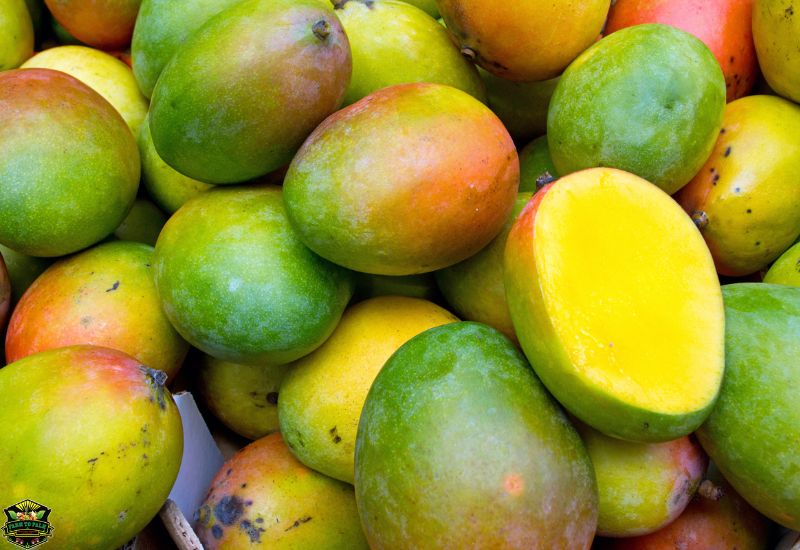
A mango is a delicious tropical fruit that is enjoyed in both sweet and savory dishes all over the world. It comes in various colors, including green, yellow, orange, and red, and its flesh is either yellow or orange.
The fruit has a flat, hard pit in the center, which is removed before eating. Mangos can be eaten either when they are firm and unripe or ripened and become soft.
They can also be cooked into tasty desserts, curries, and chutneys. While mangos can be expensive, they are often large and heavy, providing plenty of fruit per purchase. Additionally, dried mango is a popular snack option.
Where are mangoes from?
Mangoes found in grocery stores and specialty produce markets are typically imported because mango trees only thrive in tropical climates. While there are mango growers in the United States, such as in Florida, California, Hawaii, and Puerto Rico, their supplies are limited compared to producers in Southeast Asia, Australia, the Caribbean, Latin America, and South America.
Mangoes are native to India and have been cultivated for over 5,000 years. In Indian culture, mangoes symbolize love and friendship, and the traditional paisley designs were inspired by the curved shape of mangoes. Over time, mangoes have spread worldwide and become essential to tropical cuisines. In fact, mangoes are the most consumed fruit globally, surpassing banana consumption by a ratio of 3 to 1.
What Does Mango Taste Like?

A ripe, fresh mango offers a delightful combination of flavors. Its taste can be described as sweet, citrusy, and slightly melon-like. Some people compare it to a blend of peach, orange, and cantaloupe. The mango aroma is tropical and floral, reminiscent of papaya and pineapple. It is a mild fruit with a pleasant sweetness and a hint of tartness.
Interestingly, some individuals perceive a subtle pine-like taste in mangoes. This may seem peculiar, but five out of six compounds found in pine needles also exist in mango pulp. However, for most people, the standout aspects of eating a mango are its texture, aroma, and taste.
It’s challenging to discuss the experience of eating a mango by acknowledging its smooth, juicy, and velvety flesh. This characteristic makes it enjoyable to consume on its own and in desserts and savory dishes like salads.
Mango Nutrition
A 165g cup of raw mango provides the following nutrients:
- Calories: 99
- Protein: 1.35g
- Fat: 0.63g
- Carbohydrate: 24.8g
- Sugar: 22.6g
- Fiber: 2.64g
- Potassium: 277mg
- Vitamin C: 60.1mg
- Vitamin A, RAE: 89.1mcg
- Beta carotene: 1,060mcg
- Lutein and zeaxanthin: 38mcg
- Folate: 71mcg
Mangoes are a good source of vitamins and minerals, and they can contribute to the daily requirement for several nutrients.
According to recommendations for adults aged 19 years and over from the Food and Drug Administration (FDA) and the Dietary Guidelines for Americans, 2020-2025, a 165g cup of raw mango provides the following approximate percentages of the daily requirement for adults:
| Nutrient | Approximate Percentage of Daily Requirement |
|---|---|
| Vitamin C | 67% |
| Vitamin A | 10% |
| Folate | 18% |
| Vitamin B6 | 12% |
| Potassium | 6% |
Mangoes also contribute to the diet with copper, calcium, iron, as well as the antioxidants zeaxanthin and beta carotene.
Mango Health Benefits
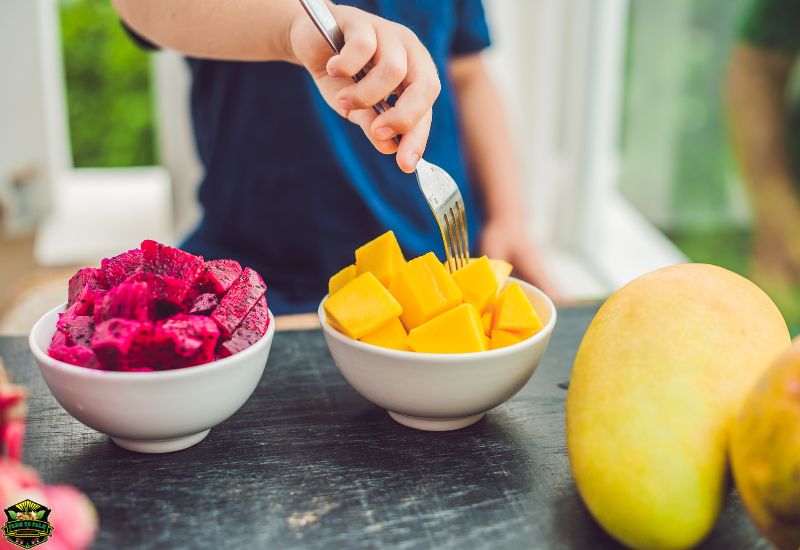
Mangoes are packed with essential vitamins, minerals, and antioxidants that offer a range of health benefits. Let’s explore some of these Health Benefits of Mango:
Supports Blood Clotting and Prevents Anemia
Mangoes are rich in vitamin K, which helps promote effective blood clotting and prevents anemia. It also plays a crucial role in strengthening your bones.
Boosts Healing and Promotes Healthy Collagen
Mangoes’ high vitamin C content supports the formation of blood vessels and aids in collagen production, which is essential for healthy skin and tissue repair.
Reduces the Risk of Cancer
Mangoes contain beta-carotene, an antioxidant responsible for their vibrant yellow-orange color. The antioxidants in mangoes help combat free radicals that can damage cells and potentially lead to cancer.
Promotes Heart Health
Mangoes are beneficial for your cardiovascular system. They are a great source of magnesium and potassium, linked to lower blood pressure and a regular heart rate. Additionally, mangoes contain mangiferin, which early studies suggest may help reduce heart inflammation.
Improves Digestive Health
Mangoes can help maintain a healthy digestive system. They contain amylase compounds that aid in breaking down complex starches in your stomach. Moreover, the dietary fiber found in mangoes can be more effective than fiber supplements in relieving constipation.
Incorporating mangoes into your diet can provide you with these valuable health benefits. So why not enjoy this delicious fruit while also supporting your overall well-being?
Types of mango
Mangoes are available throughout the year, but the types and origins may vary depending on the season. Here is a breakdown of the most common varieties and when they are typically available:
Tommy Atkins Mango:
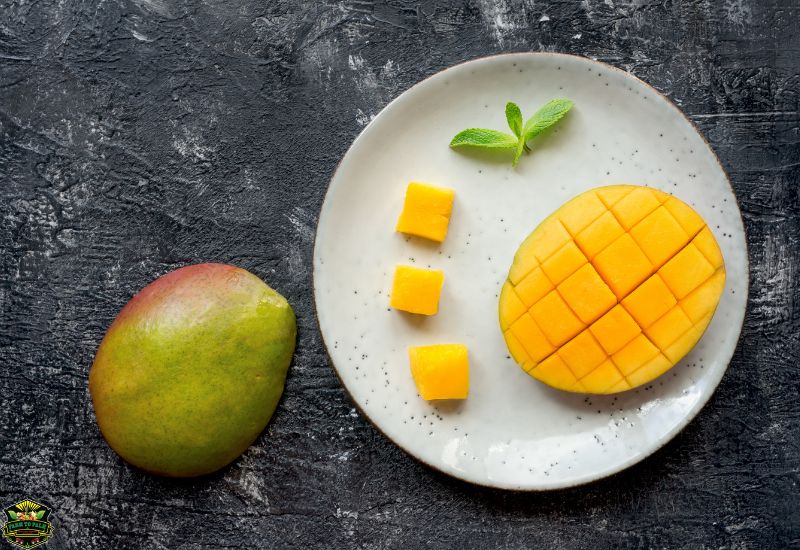
- Availability: March to July
- Description: These mangoes are large and mild, with a hint of citrus flavor and juicy flesh. They are versatile and widely available in North America.
- Ripeness indicators: Tommy Atkins mangoes develop a predominant red blush over their golden-green skin as they ripen. Overripe mangoes may have sagging skin and black spots.
Ataulfo or Honey Mango:
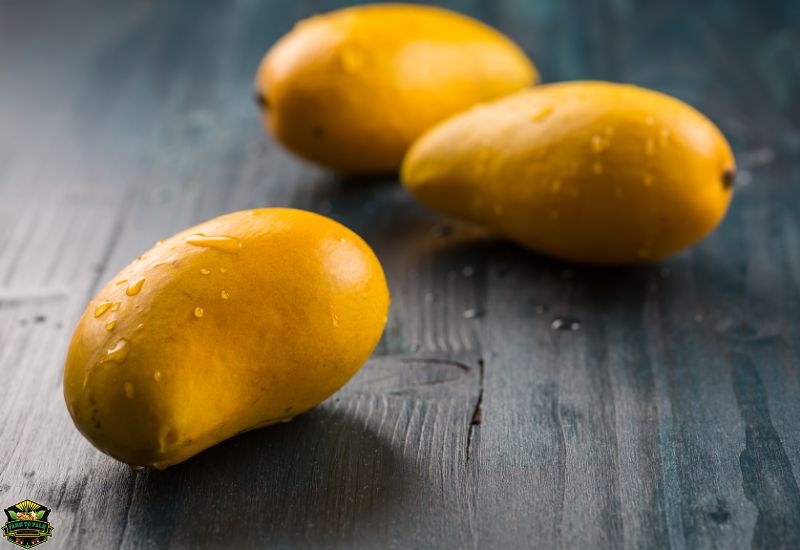
- Availability: March to July
- Description: These small mangoes have bright yellow skin, a honey-sweet tropical flavor, and smooth, fiberless flesh. They are perfect for blending into smoothies, sauces, and ice creams.
- Ripeness indicators: The skin of Ataulfo mangoes turns a deep yellow gold, and the fruit wrinkles slightly when fully ripe.
Keitt Mango:
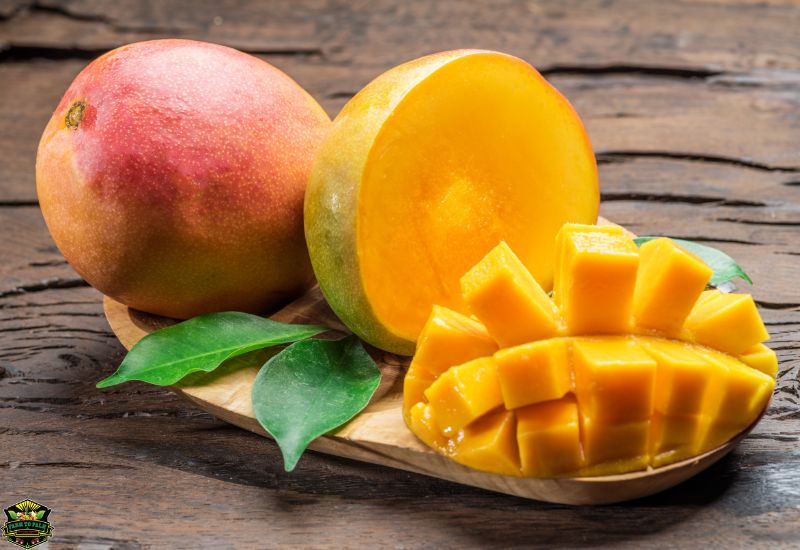
- Availability: March to April, August to September
- Description: Keitt mangoes have firm flesh, a citrusy taste, and deep green skin. They retain their shape well when sliced or diced for salsa and salads.
- Ripeness indicators: Even when ripe, the skin of Keitt mangoes remains green. The fruit should feel soft, like a peach, and smell fragrant.
Haden Mango:

- Availability: March to May
- Description: Haden mangoes are slightly sour, firm, and ultra-peachy. They are medium-sized with green, gold, and red skin. These mangoes can be used in any recipe that calls for fresh peaches.
- Ripeness indicators: The green skin of Haden mangoes turns yellow as they ripen, and the red blush becomes more prominent.
Francis or Haitian Mango:
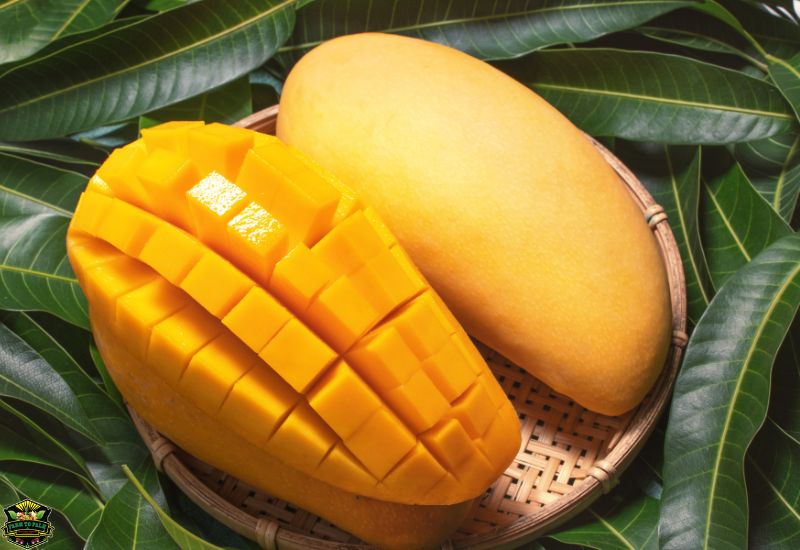
- Availability: May to June
- Description: Francis or Haitian mangoes have a slightly S-shaped appearance, a super-sweet taste, and somewhat fibrous flesh. Their skin is green-yellow. They are best suited for raw recipes with less noticeable fibers.
- Ripeness indicators: The mango is ripe when its skin turns yellow. Ripe Francis mangoes also have a very fragrant smell.
Kent or Florida Red Mango:
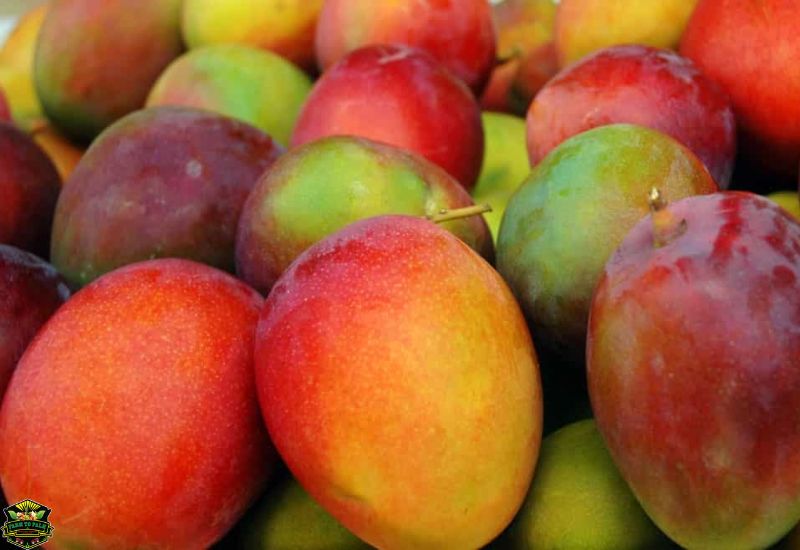
- Availability: December to February
- Description: Kent or Florida Red mangoes have juicy, sweet-tart flesh and green skin. The deep-orange flesh is creamy enough for blended recipes and firm enough for slicing and dicing.
- Ripeness indicators: Optimal ripeness is indicated by green-gold skin with yellow freckling. The fruit may also develop a rosy blush over a small area.
Alphonso Mango:
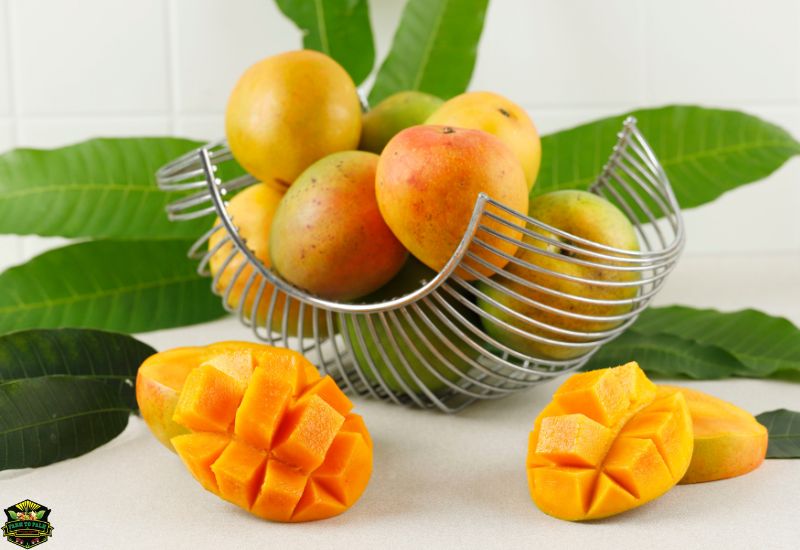
- Availability: April to July
- Description: Alphonso mangoes have a golden exterior and saffron-hued, creamy, non-fibrous flesh. They are considered “the king of mangoes” in India, where they are enjoyed for breakfast, used in drinks, and added to spicy curries.
- Ripeness indicators: The greenish-yellow skin of Alphonso mangoes turns goldenr as it ripens, and the fruit becomes lusciously fragrant. However, these mangoes can become overripe quickly.
These descriptions provide helpful information about each mango variety’s taste, texture, availability, and ripeness indicators.
When are mangos in season?
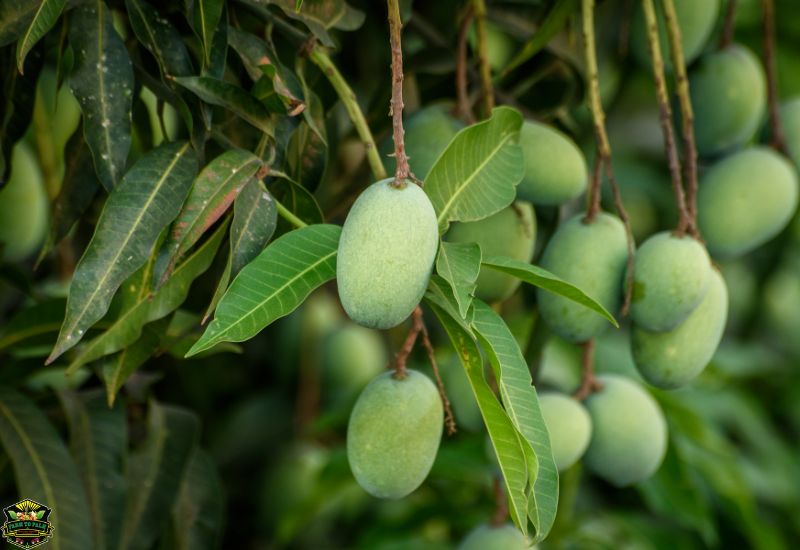
Detective Mango is back to solve another intriguing fruity mystery: when are mangos in season? This question often comes up, and there is a common misconception that mangos are only available during the summertime. However, I’m here to debunk this myth and provide valuable information.
Contrary to popular belief, mangos are available all year round in the United States. We are fortunate to have access to various mangos, each with its unique season. This means that we can enjoy mangos throughout the year!
Now, there’s more to the story. If you’re looking for a particular type of mango, different seasons come into play. For example, if you’re craving a yellow honey mango, you’ll have to wait until around mid-February or March. Mango availability depends on various factors, such as their country and climate during that particular season.
Fortunately, whenever you visit the supermarket, you should be able to find one of the six popular mango varieties that I’m about to mention:
- Honey mangos are available from January to late February, peak in availability from late February to mid-July, and remain somewhat available from late July to the end of December.
- Francis mangos: These are available in April, with peak availability from May to July. Some are also available in July, August, early September, and mid-October to mid-November.
- Haden mangos: These are available from mid-January to March, with peak availability during March, April, and early May. Some availability can also be found in May, June, July, early August, mid-September, October, November, and early December.
- Keitt mangos are available in early March, reach peak availability from mid-March through early April, have some availability from mid-April through late July, peak availability from August through September, and have some availability from October through December.
- Kent mangos: These mangos reach peak availability from January to early February. They have some availability from early February through the beginning of December and go peak availability again at the end of December.
- Tommy Atkins mangos: These areThese are available from late January through early March. They peak in availability from early March through mid-July and remain somewhat available from mid-July through December.
So, whether you’re looking for a specific type of mango or want to enjoy this delicious fruit all year long, rest assured that there is always a mango in season. Keep an eye out for these popular varieties during their respective availability periods, and let your taste buds indulge in the sweet and tropical flavors of mangos throughout the year!
How to choose a mango?

Finding the perfect mango may seem daunting, but fear not! With guidance, you can confidently choose the ripest and most flavorful mangoes. Let’s embark on this mango-shopping adventure together!
First and foremost, forget about relying solely on color to determine a mango’s ripeness. Unlike other fruits, mangoes come in various colors, shapes, and sizes, making color an unreliable indicator. Instead, focus on the fruit’s texture.
When you pick up a mango, could you give it a gentle squeeze? A ripe mango will yield slightly to pressure, indicating that it is ready to be enjoyed. On the other hand, a medium-ripe mango will be somewhat firm, while an unripe mango will feel very firm to the touch. It’s worth noting that mangos can be enjoyed at various ripeness levels, each offering a unique flavor experience. From sour-tart notes for unripe mangos to naturally sweet goodness for perfectly ripe ones, there’s a mango for everyone’s taste buds.
If you’re familiar with other fruits like peaches and avocados, you can use that knowledge to your advantage when selecting a mango. Just like these fruits, mangos also become softer as they ripen. So trust your instincts and recall your experience with produce to guide you in finding the ideal mango.
Another delightful way to gauge the freshness of mango is by checking for a fruity aroma near its stem. Ripe mangos often emit a pleasant fragrance, adding an extra sensory element to the selection process. Remember, the red color that may appear on certain varieties does not accurately indicate ripeness. Always rely on touch and scent rather than color.
Once you’ve mastered choosing a fresh mango, you can bring home the perfect fruit to share with your loved ones or savor yourself. Don’t let any lack of experience deter you from appreciating this incredible fruit. With a bit of practice, you’ll become an expert in no time and may even find yourself teaching others how to choose a mango!
So, let’s head out on this mango shopping journey armed with knowledge and excitement. The world of mangoes awaits!
How do you preserve mangoes?
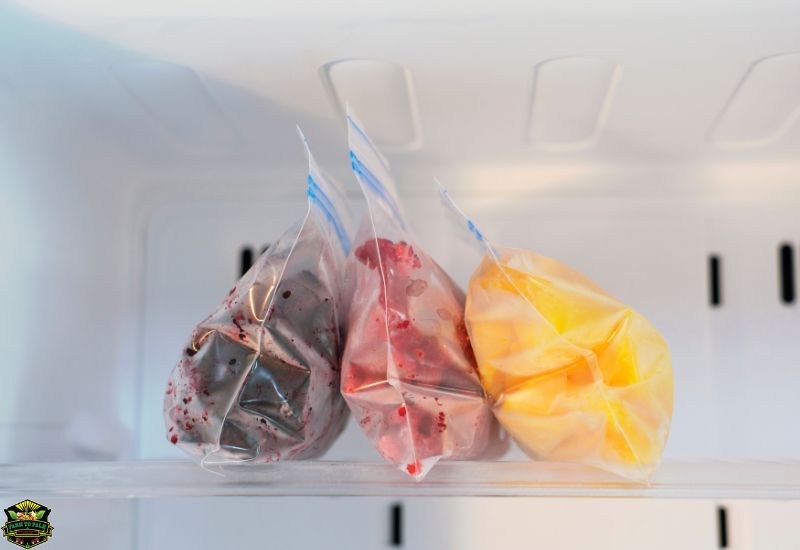
If you have a ripe mango but are not ready to eat it, you can store it in the refrigerator. It’s best to keep it in the low-humidity crisper drawer. The fridge’s cool temperature will slow the ripening process and give you more time to enjoy the mango. Ideally, set your fridge temperature to 40 degrees Fahrenheit, the optimal cool temperature for mangoes.
If you have already sliced or cubed the mango, storing the pieces in an airtight food storage container with a lid rather than using a zip-top bag is recommended. This will help keep the fruit fresh. The mango should last for about a week in the container, but it’s always a good idea to give it a sniff test before consuming it to ensure its freshness.
Can you freeze mangoes?
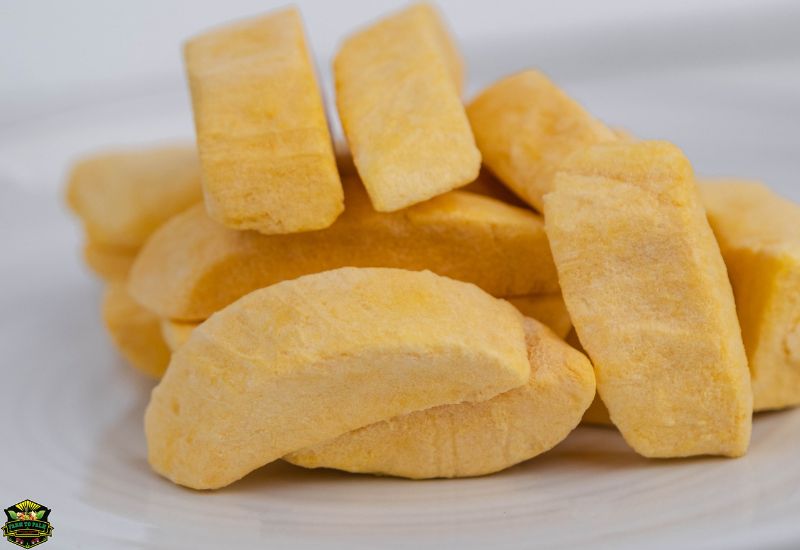
Stock up on mangoes while they are in season from October to March.
You can freeze them to enjoy them for a more extended period. To freeze the mangoes, start by removing the cheeks and peel.
Wrap each cheek individually in plastic wrap and place them in a single layer on a baking tray.
Place the tray in the freezer and allow the mangoes to firm up. Once firm, transfer the wrapped cheeks to an airtight container and return them to the freezer.
When ready to use the frozen mangoes, thaw them and chop the flesh. You can then add the mango to your morning cereal or use it to make delicious smoothies or cocktails.
How to Store Mango?
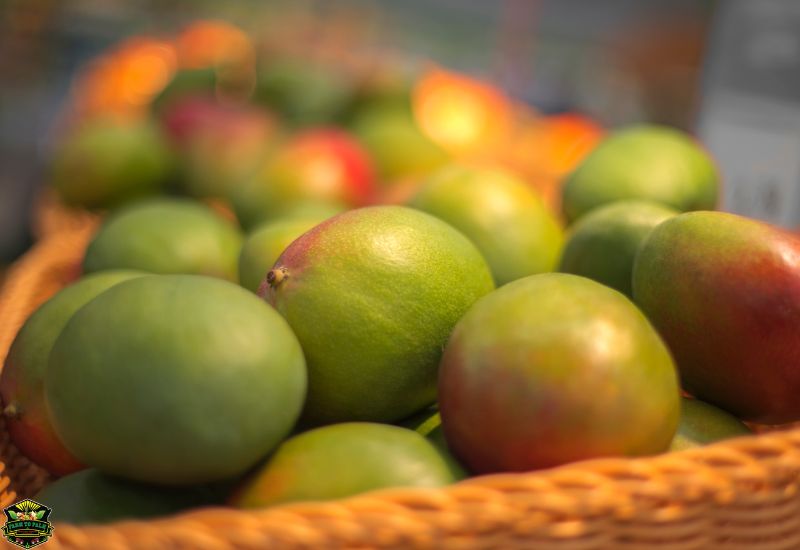
To ripen an unripe mango, it is best to keep it at room temperature for several days. Once ripe, the mango should give a little when pressed, similar to a ripe peach. You can store the mango in a brown paper bag on the counter to speed up the ripening process. Once the mango is fully mature, it can be stored in the refrigerator for a few days before use.
If you have cut a mango and want to store it, keep it in an airtight container in the refrigerator for a few days. If you prefer to freeze the mango, it can last up to six months if stored in a sealed bag in the freezer. Dried mango should be kept in a dry and dark place, lasting up to three months.
Where to Buy Mango?
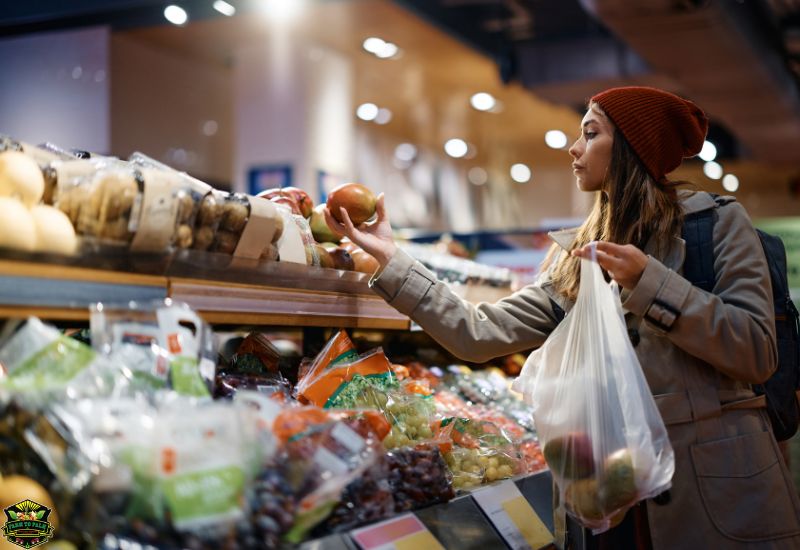
Mangoes are readily available throughout the year at Farm to Palm supermarkets, with a broader selection during the late spring and early summer. They are usually sold individually or by weight and are not packaged. You can also find different varieties of mangoes at specialty markets, Asian groceries, and Mexican markets. If you prefer convenience, you can purchase peeled, cubed, frozen mango from the freezer section or dried mango from the snacks or bulk goods aisle. Groceries often offer canned cubed or pureed mango as well.
When selecting a mango, choose one that feels heavy and is free of cuts or bruises. Ripe mangoes have a delightful tropical fruity scent and yield slightly when gently pressed. Some mangoes ripen to a beautiful blend of red, orange, and green hues, while others become golden yellow or green when fully ripe.
Mango trees thrive in tropical and subtropical climates where temperatures do not drop below 40 degrees. These trees can grow quite large and typically bear fruit by the third year.

